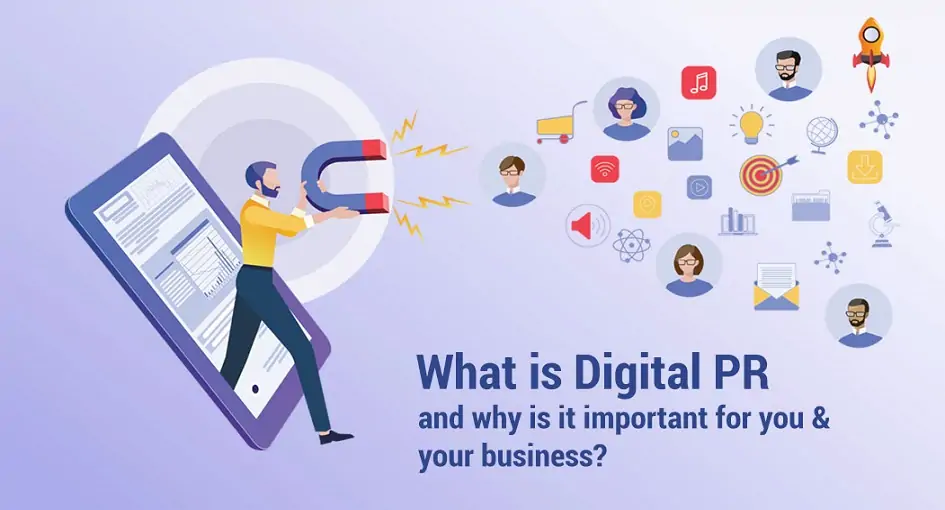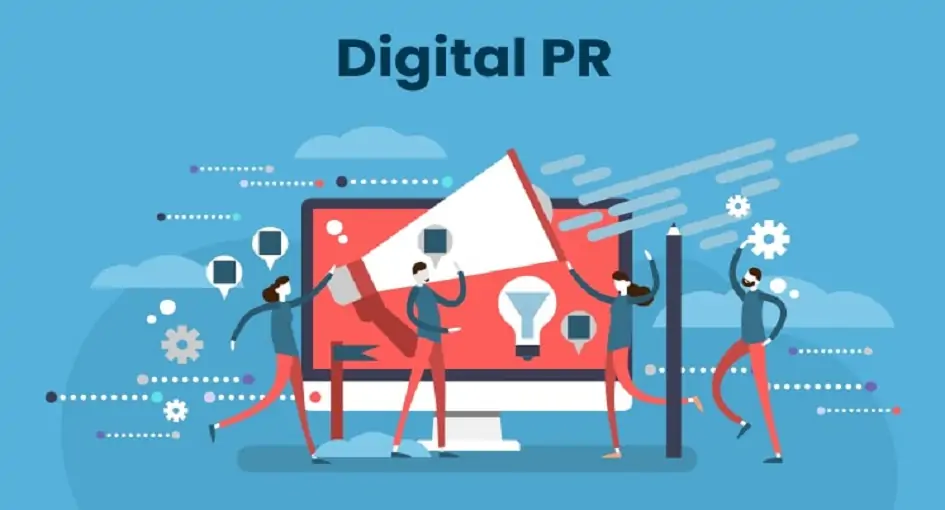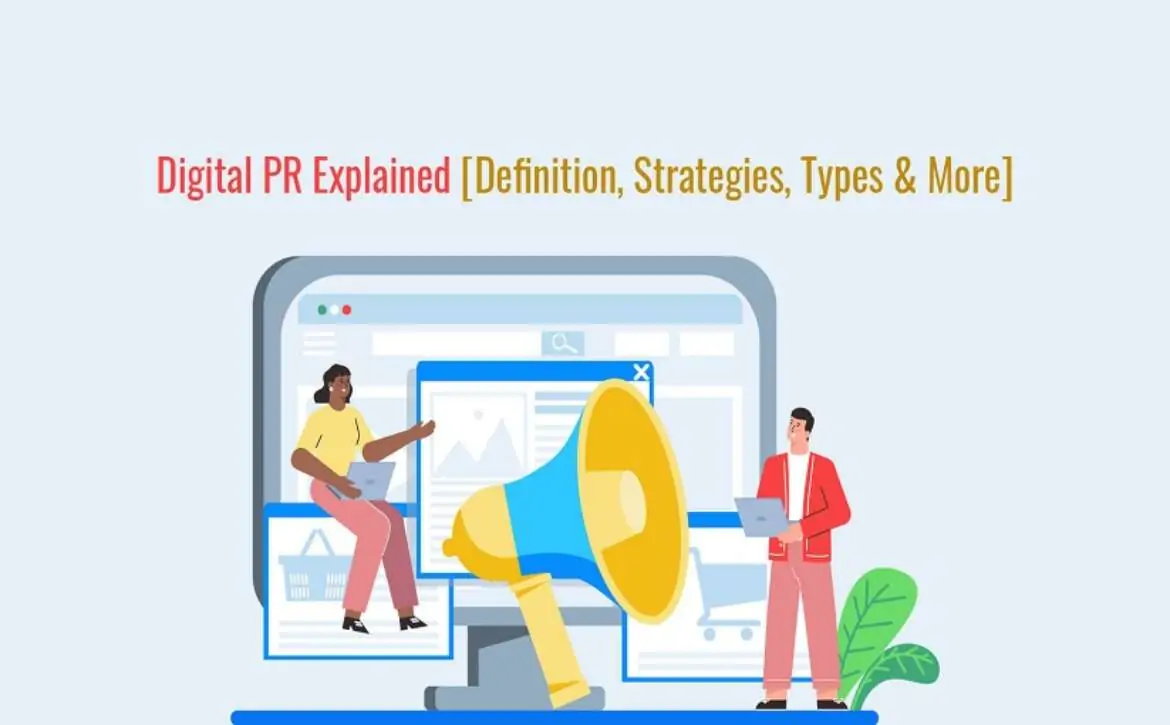Guide to Crafting an Effective Digital Public Relations Strategy
Digital public relations (PR) is becoming an essential component of any effective marketing plan in today’s connected society. Businesses need to modify their public relations strategies to effectively interact with their audience in the digital sphere, given the emergence of social media, online news outlets, and influencer marketing.
A digital public relations strategy is an all-encompassing plan that makes use of digital platforms and channels to connect with stakeholders, manage a company’s reputation, and shape public opinion. It’s not the same as typical PR tactics, which mostly concentrate on press releases and media relations.
Both traditional and digital public relations strategy tactics seek to control public perception, cultivate positive relationships with stakeholders, and manage an organization’s reputation. While digital public relations strategy employs digital platforms like social media, blogs, podcasts, and influencer networks, traditional PR uses classic media channels like print periodicals. Precise targeting, comprehensive measurement and analytics, and increased agility and responsiveness are all provided by digital PR. With cheaper distribution costs and improved ROI tracking via analytics tools, it is frequently economical. This facilitates investment justification and strategy optimization for optimal impact.
This comprehensive guide explores the crucial processes involved in creating a practical digital public relations plan that increases brand awareness, cultivates favorable connections, and propels business expansion.

Understanding Digital Public Relations Strategy
Digital public relations strategy encompasses online channels and platforms to manage a company’s reputation, communicate with stakeholders, and influence public perception. Unlike traditional PR, which primarily focuses on media relations and press releases, digital PR leverages various digital channels such as social media, content marketing, email campaigns, and influencer partnerships to reach and engage with target audiences in real-time.
Key Components of a Digital Public Relations Strategy
Define Objectives and Goals:
Clearly defining your aims and goals is the first stage in creating a digital PR plan. Are you trying to build your brand’s recognition, promote consumer engagement, create leads, drive website traffic, or improve your reputation? By setting clear, quantifiable, and attainable objectives, you can adjust your plan to produce the required results.
Recognize Your Audience:
For your digital public relations strategy to be effective, it is imperative that you have a thorough understanding of your target audience’s interests, preferences, and activities. To identify key segments and efficiently meet their requirements and pain areas, do market research, analyze audience demographics, and acquire insights.
Identify Key Messages and Story Angles:
Determine the main themes and narrative arcs: Create story arcs and essential themes that support your brand’s goals, mission, and values. Emphasize distinctive selling propositions, industry insights, thought leadership, success stories, or social impact projects that set your brand apart from the competition and appeal to your target market.
Make Use of Digital Channels:
Select the digital platforms and channels that will best help you reach your target audience and spread the word. Social media sites (including Facebook, Instagram, LinkedIn, and Twitter), blogs, podcasts, online news sources, video-sharing websites, and influencer networks are a few examples of this.
Produce Captivating Information:
Provide interesting, well-written information that draws readers in and motivates them to take action. Blog entries, articles, infographics, webinars, films, whitepapers, case studies, and interactive material that enlightens, amuses, or benefits your audience can all fall under this category.
Develop Connections with Media and Influencers:
To get media attention, possibilities for guest blogging, and influencer collaborations, cultivate connections with bloggers, journalists, industry influencers, and opinion leaders in your sector. To build credibility and trust, interact with them on social media, share their work, and provide insightful commentary.
Track and Measure Outcomes:
Use key performance indicators (KPIs) like website traffic, social media interaction, media mentions, brand sentiment, and conversion rates to track the effectiveness of your digital public relations strategy campaigns. Track results, pinpoint areas for development, and maximize the impact of your plan by utilizing analytics tools.
Adapt and Change:
New platforms, technology, and trends are appearing quickly, and the digital world is always changing. Continue to be flexible and nimble by keeping an eye on market trends, trying out fresh tactics, and honing your plan in response to criticism and data-driven insights.

Digital PR Strategy Vs Traditional PR Strategy
- Channels and Platforms:
- Traditional PR: Relies on traditional media channels to distribute press releases, pitch stories to journalists, and obtain media coverage, including newspapers, magazines, radio, television, and direct mail.
- Digital PR: Uses digital platforms to communicate with audiences, spread information, and amplify brand messaging. These platforms include social media, websites, blogs, online news sources, email newsletters, podcasts, and video-sharing sites.
- Audience Reach and Targeting:
- Traditional PR: Has a wide audience but might not be able to target audiences precisely. Using traditional media channels, messages are disseminated to large audiences with little opportunity to customize content for particular interests or demographics.
- Digital PR offers firms the ability to precisely target specific demographics, interests, and behaviors through the use of influencer alliances, email campaigns, targeted advertising, and search engine-optimized content.
- Content Distribution and Consumption:
- Traditional PR: Conveys information from the organization to the public using conventional media channels in a one-way manner. There’s hardly much audience involvement or engagement.
- Digital PR: Enables companies to communicate with their audience in both directions, react quickly to comments and likes, and develop relationships through interactive content.
- Measurement and Analytics:
- Traditional PR: There are few insights into audience involvement, reach, and impact, making measurement of PR operations difficult. Media attention, circulation figures, and qualitative evaluations are usually the foundation of evaluation.
- Digital PR: Provides strong analytics and measurement tools that let businesses monitor key performance indicators (KPIs) such as website traffic, social media engagement, click-through rates, conversion rates, and sentiment analysis. This makes it possible to make data-driven decisions and optimize campaigns.
- Speed and Agility:
- Traditional PR: Usually requires more time to design, carry out, and distribute PR campaigns and materials. Reliance on traditional media outlets may cause a delay in responding to breaking news or new issues.
- Digital PR: Offers increased swiftness and flexibility, allowing companies to react instantly to events, patterns, or emergencies via digital channels. Rapid content publication, sharing, and updating enables more relevant and timely audience communication.
- Cost and ROI:
- Traditional PR: May be expensive, involving costs for media relations, printing, distribution, and advertising. Due to the difficulty of quantifying the effect of media coverage on company outcomes, measuring return on investment (ROI) may be difficult.
- Digital PR: Generally more economical, with less expensive distribution and easier ROI measurement using analytics tools. To maximize return on investment, organizations can monitor the success of digital initiatives in real-time and modify their tactics accordingly.
Conclusion:
In today’s digital environment, a well-thought-out digital public relations strategy is crucial for increasing reputation, fostering brand recognition, and propelling corporate expansion. You can develop a practical digital public relations strategy that connects with your target audience and yields measurable results by setting clear objectives, knowing your audience, utilizing digital channels, producing engaging content, forming connections with media and influencers, keeping an eye on the results, and being flexible.


